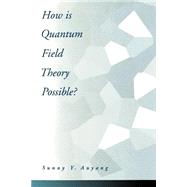
Note: Supplemental materials are not guaranteed with Rental or Used book purchases.
Purchase Benefits
What is included with this book?
| Introduction | p. 3 |
| A Human View of the World in Quantum Field Theory | p. 3 |
| The Categorical Framework of Objective Knowledge | p. 11 |
| Nonrelativistic quantum mechanics | p. 16 |
| The Structure of Quantum Mechanics | p. 16 |
| The Quantum Measurement Problem | p. 22 |
| Relativity and symmetries | p. 26 |
| Geometry and Space-Time | p. 26 |
| Symmetries in Physics | p. 32 |
| The Principles of Relativity and Local Symmetry | p. 38 |
| Quantum field theory | p. 43 |
| Quantum Fields and Elementary Particles | p. 43 |
| Fields, Quantum Fields, and Field Quanta | p. 47 |
| Interacting Fields and Gauge Field Theory | p. 54 |
| Object of experiences: quantum state--observables--statistics | p. 61 |
| Properties and Quantum Properties: Amplitudes | p. 61 |
| The Form of Observation and the Reality of Quantum States | p. 70 |
| The Gap in Understanding: Eigenvalue and Probability | p. 78 |
| Coordinatization of the Quantum World: Observables | p. 85 |
| The General Concept of Objects in Physical Theories | p. 89 |
| The Illusion of the Observer | p. 104 |
| The Mentalism of yes--no Experiments | p. 113 |
| The event structure and the spatio-temporal structure: local fields | p. 119 |
| The Whole and the Individual: Field and Event | p. 119 |
| This-Something: Events or Local Fields | p. 122 |
| The Basic Spatio-Temporal Structure of the Physical World | p. 133 |
| The Referential Structure of Field Theory | p. 152 |
| The States of the Field as a Whole: Field Quanta | p. 157 |
| Identity and Diversity: Quantum Multi-Particle Systems | p. 160 |
| Explicit relations and the causal order: interacting fields | p. 166 |
| Relation and Constant Predication | p. 166 |
| Permanence, Endurance, and the Concepts of Time | p. 169 |
| How Are Regular Successions of Events Possible? | p. 175 |
| Relational Properties: Phase and Potential | p. 183 |
| Causal Relations: Connection and Parallel Transport | p. 187 |
| Thoroughgoing Interaction: Renormalization | p. 189 |
| Epilogue | p. 194 |
| The Intelligibility of the Objective World | p. 194 |
| Measure and probability: quantity, quality, modality | p. 197 |
| Measure: the General Concept of Extensive Magnitudes | p. 197 |
| Function and Distribution: Individual and Collective Qualities | p. 203 |
| Individual, Statistical, and Probabilistic Statements | p. 206 |
| Fiber bundles and interaction dynamics | p. 214 |
| The cosmic and the microscopic: an application | p. 223 |
| Notes | p. 229 |
| Bibliography | p. 265 |
| Index | p. 273 |
| Table of Contents provided by Syndetics. All Rights Reserved. |
The New copy of this book will include any supplemental materials advertised. Please check the title of the book to determine if it should include any access cards, study guides, lab manuals, CDs, etc.
The Used, Rental and eBook copies of this book are not guaranteed to include any supplemental materials. Typically, only the book itself is included. This is true even if the title states it includes any access cards, study guides, lab manuals, CDs, etc.